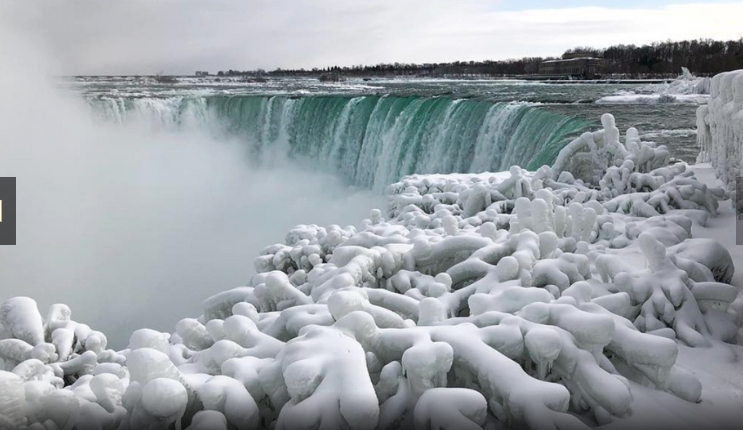It’s that time of year again. The mist from Niagara Falls is currently forming an icy layer on nearby trees, railings and lamp posts, turning the surrounding area into a winter wonderland.
CNN reported that the extreme cold has caused the falls’ rushing waters to halt in some locations. However, The Buffalo News was quick to explain that it’s not completely frozen over, and even where it appears to be, water still flows underneath.
«Something moving as fast as the falls is extremely difficult to freeze,» Stuart M. Evans, assistant professor in the Department of Geography at the University of Buffalo told the paper.

However, it did happen, sort of, in 1848. Several days of gale force winds pushed some Lake Erie’s ice floes to the mouth up the Niagara River, creating a sort of natural dam and stopping the flow of the river. The event shut down flour mills and factories along the banks that relied on water wheels for power. Tourist flocked to see the falls in a new light. The clog lasted about a day, then the water came roaring back down the falls.
The falls don’t have to freeze over to be beautiful, and the photos above show just how otherworldly Niagara looks in winter.
weather.com

Es esa época del año otra vez. La niebla de las cataratas del Niágara está formando actualmente una capa helada en los árboles, barandas y postes de lámparas cercanos, convirtiendo el área circundante en un paraíso invernal.
CNN informó que el frío extremo ha provocado que las caídas de las aguas se detengan en algunos lugares. Sin embargo, The Buffalo News se apresuró a explicar que no está completamente congelado, e incluso donde parece que está, el agua todavía fluye por debajo.
«Algo que se mueve tan rápido como las caídas es extremadamente difícil de congelar», dijo al periódico Stuart M. Evans, profesor asistente en el Departamento de Geografía de la Universidad de Buffalo.
Sin embargo, sucedió, en cierto modo, en 1848. Varios días de fuertes vientos azotaron el hielo del lago Erie en la desembocadura del río Niágara, creando una especie de presa natural y deteniendo el flujo del río. El evento cerró molinos de harina y fábricas a lo largo de las orillas que dependían de las ruedas hidráulicas para generar energía. Turista acudía a ver las cataratas desde una nueva perspectiva. El suceso duró aproximadamente un día, luego el agua volvió a rugir por las cataratas.
Las cataratas no tienen que congelarse para ser hermosas, y las fotos de arriba muestran cómo se ve el Niágara de otro mundo en el invierno.


